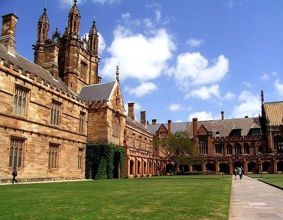
Introduction
Generally, the Australian education system consists of three levels: primary education, secondary education, and adult education (universities and vocational colleges). Australian law mandates compulsory education up to a certain age. This age requirement varies by state but is typically between 15-17 years old. Education beyond compulsory schooling is integrated into the Australian Qualifications Framework.
Australia’s academic calendar varies based on states and institutions. In general, primary, secondary, and vocational schools run from late January to mid-December, while universities operate from late February to mid-November.
Primary & Secondary Education
After completing Year 10 and fulfilling their compulsory secondary education, students have the option to take entrance exams for vocational colleges or universities. Overall, students generally complete up to the 12th grade during their primary and secondary school years.
Australian secondary education is divided into public and private sectors, both of which have distinguished institutions. Each state or territory in Australia has a big number of government-run secondary schools. These schools are government-funded and managed by state governments and education departments. Due to their public nature, the tuition fees for local students are affordable, and even for international students, they are lower than those of private secondary schools.
Private primary & secondary schools in Australia are typically established and managed by religious organizations, corporations, or groups of individuals. Many of these schools are elite institutions following the British education system, characterized by rigorous academics and high university entrance rates. Private schools are further categorized into church schools, independent schools, and international schools. Among these categories, church and independent schools can be coeducational or single-sex, and some even offer boarding facilities.
Higher Education
Australia’s higher education ranks among the world’s top-tier. As per various ranking systems, there are typically 7-8 Australian universities that consistently rank within the top 100 universities worldwide. Notably, Australian universities are mostly public institutions, differing from the US system. Most of their international graduates are active within Australia, Europe, and Southeast Asia. Australian universities combine American-style openness with British-style elite education, making them global education hubs that attract students worldwide. The Group of Eight (Go8) represents the most prominent universities in Australia:
- Australian National University
- Monash University
- University of New South Wales
- University of Sydney
- University of Queensland
- University of Melbourne
- University of Adelaide
- University of Western Australia
Vocational Education (TAFE)
Upon completing Year 10 of secondary school, students have the option to continue with Years 11 and 12, or choose to study at vocational education and training institutions. Both public Technical and Further Education (TAFE) institutes and private technical colleges offer vocational education and training programs. These courses equip students with practical skills and provide hands-on experience. Many TAFE schools collaborate with Australian universities, enabling students to transition from TAFE to university after completing their courses. This often leads to credit exemptions of around one year in bachelor’s degree programs.
Foundation Year
After completing Year 11 of secondary school, international students can opt to undertake a foundation year program, which serves as a pathway to meet the entry requirements for diploma, advanced diploma, and bachelor’s degree programs at universities. The curriculum of foundation year programs is thoughtfully designed to assist international students in quickly adapting to the educational environment in Australia
English Language Studies
In Australia, there are numerous English schools offering various English training programs to help students enhance their language proficiency. Many Australian universities and vocational schools also have dedicated language centers that offer Intensive English Language Courses for Overseas Students (ELICOS), designed to strengthen the English skills of international students. These programs are designed to support students in achieving the language proficiency required for successful academic and professional pursuits in an English-speaking environment.
